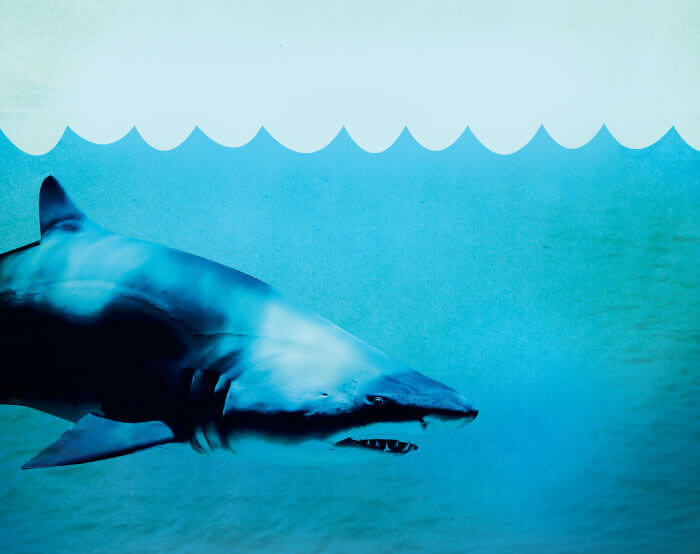“Pseudojournals” – predatory journals or publishers – abuse the academic system and community solely to gain profit. They do so by charging for the publication of questionable scientific content, devoid of standard editorial procedures like peer review. These journals operate globally, but their deleterious effects on the academic environment are felt most keenly in developing countries, where local researchers who publish in such journals build careers and gain tenure based on their publications, but fail to advance their scientific and skills. On the other hand, these journals may also attract honest but inexperienced researchers who find their article “hijacked” after submission – no longer permitted to withdraw it, but subject to pressure to pay the fee for publication.
Predatory journals disguise themselves in different ways. Some of them operate in the “borderline” zone, balancing legitimate and for-profit practice, but still consistently and notoriously publish low-quality or even fabricated articles without conducting any peer review. Unfortunately, there are no firmly established criteria to help distinguish a predatory journal, particularly a “borderline” example, from a low-quality but legitimate one.
In more pronounced cases, it is easy to tell. At first sight, these journals use titles similar to legitimate journals, or label themselves as American, British, or originating from another scientifically sound nation despite being based in a completely different location. At the same time, they display false, misleading, or irrelevant scientific metric indices. Usually, information on the pseudojournals’ editorial policies is vague, limited, incomplete, or altogether missing. The contents are especially revelatory; such a journal publishes everything it gets, regardless of its aims and scope, and sometimes even crossing the boundaries between branches of science, as with the Journal of Medicine, Radiology, Pathology and Surgery. Published articles lack basic editing and the layout is usually poorly done. These journals are almost never covered by PubMed/MEDLINE, Scopus, Web of Science, or the Directory of Open Access Journals (DOAJ).
In more discreet cases, it is not easy to recognize predatory journals. They look deceptively like legitimate ones, with fitting titles, appropriate articles, and professional-looking layouts. Some of these journals even manage to become members of authoritative associations dealing with editorial and publishing best practices – a fact they then misuse to improve their reputations. In addition, some of them have their contents covered by PubMed or Scopus – which not only makes it more difficult to spot the fakes, but also creates “noise” in the literature and spreads irrelevant, trivial, or wrong information while making it more difficult to locate and identify true science. Of note, in our research revealed that only one predatory journal was listed in a reputable database (1). However, we do not know how many of them have applied and may be accepted for inclusion in reputable databases.
Another common feature that should raise suspicion of a predatory journal is its focus on authors – for instance, advertising or overemphasizing rapid peer review, database coverage, journal metrics, and emails with non-selective calls for papers. In contrast, legitimate journals put emphasis on scientific content to attract readers. Nevertheless, sometimes a more detailed analysis of the journal is necessary to rule out its potentially predatory nature, including looking at the reputation of the editor-in-chief and the journal’s validation by databases or authoritative bodies. Sometimes, even a simple Google search for the journal can reveal other people’s experiences that may assist determining its legitimacy.

The impact of predatory journals is astonishing – far more severe than it appears at first glance. They affect not only individual authors, but can have a negative or even ruinous impact on the academic environments of entire countries. Developing countries have limited scientific infrastructure and human resources. Unfortunately, without equivalent scientific resources, many researchers in these countries cannot reach the level of research quality and importance required to publish extensively in reputable journals, so these countries usually have loose criteria for academic tenure. Nevertheless, they have adopted the academic organizational structures of developed countries, including the “publish or perish” mindset that makes authorship essential for an academic career. This is where predatory journals come in to fill the gap.
This setting creates a vicious cycle leading to extreme detriment of under-resourced academic communities. Inexperienced or incompetent researchers publish in pseudojournals, use those publications to rise through the ranks of academia, and train the next generation of researchers in the same methods. Eventually, the scientific potential of such a community could be devastated.
For those whose academic work has a direct impact on patients, illegitimate journals might even lead to a negative effect on patients’ health.
These journals also pose a significant challenge to individual scientistis. In particular, young and inexperienced researchers might be tricked into contributing to predatory publications. This can have a deleterious impact on their academic and professional careers. Consider that the misfortune of publishing in a predatory instead of a legitimate journal could result in a failure to fulfil the requirements for a doctoral thesis – or that relying on results from an inadequately peer-reviewed publication could mean a waste of months or even years of scientific work. For those whose academic work has a direct impact on patients, illegitimate journals might even lead to a negative effect on patients’ health.
Our research in our own field has shown that the number of predatory journals in pathology is approaching the number of legitimate pathology journals listed in Science Citation Index Expanded and the Web of Science. If this trend continues, it is expected that pseudojournals may outnumber the legitimate ones at some point in the future. Our next step is to look into the prevalence of predatory journals in laboratory medicine more generally to determine whether or not the threat is equally great – and to help raise awareness and build reliable tools for identifying these journals.
Like any other revolutionary development, open-access publication can be – and has been – misused. However, we do not believe that open access itself is to blame for the rise of predatory journals. In fact, open access is definitely the way of the future, especially in areas where researchers may not be able to afford multiple expensive subscriptions. The availability of legitimate, peer-reviewed information facilitates research dynamics and the overall progress of science and medicine. The academic community widely recognizes the importance of open access, and many institutions support their researchers in publishing with open-access journals. And the benefits extend to authors as well as to readers; many prefer open access because it means their papers are immediately available for reading and citation, thus increasing the author’s reputation and disseminating knowledge faster. No wonder, then, that an increasing number of reputable publishers are offering open-access options to their contributors. Nevertheless, we believe that predatory journals are damaging the open-access model – once again, with a more pronounced effect in developing countries.
As the issue of predatory publishers is brought to the forefront, the academic community will need to adopt quality control criteria that can clearly differentiate between predatory and legitimate journals – particularly in the countries that are most severely affected. Eventually, such precautions will improve the publishing landscape for both academia and legitimate publishers.

Many researchers may find that they are pursued by predatory publishers, who ask them to submit manuscripts. And many more will likely come across these publishers online while seeking appropriate venues for future articles. How can legitimate academics protect themselves from danger? In addition to the criteria mentioned earlier, they should request the advice of senior colleagues and fellows – a task made much easier by social media; science and medical professionals all over the world can share information about pseudojournals almost instantly.
It’s also important to question what you find, just as you would any scientific result. Have I ever read an article from this journal? Have I seen it cited in other legitimate publications? Have any of my colleagues or collaborators published articles in this journal? If all of the answers are negative, or if any of the journal’s characteristics raise suspicion of a potential predatory nature, you should definitely apply the criteria used in our study (1) to ensure that your article is not being submitted to a pseudojournal.
A plethora of excellent and legitimate open access journals enable the free and unrestricted sharing of scientific and medical knowledge. Before deciding whether or not to submit your research to any of them, you should carefully evaluate the journal’s impact factor (as provided by Journal Citation Reports, Clarivate Analytics) and indexing status – especially given that even legitimate journals, if recently launched, may lack an impact factor and may not be indexed in the major bibliographic databases. Notably, important information may be obtained from sources such as the World Association of Medical Editors (WAME) (2) and the Committee on Publication Ethics (COPE) (3), which are dedicated to promoting best principles and practices in publication ethics – including those related to research and publication misconduct. A coalition of scholars has also developed an online tool known as “Think. Check. Submit.” to help scientists identify trusted journals in which to publish their research. When contributing to our collective knowledge, researchers would be well served to familiarize themselves with the basic principles of academic publishing and indexing using the above sources. Such knowledge is your best defense against academic predation!
This article was first published in our sister publication, The Pathologist. Read more at www.thepathologist.com.
References
- YM AlAhmad et al., “A critical appraisal of predatory journals in pathology” (2018). Available at: https://bit.ly/2CWxV7z. Accessed January 8, 2019.
- World Association of Medical Editors, “Principles of Transparency and Best Practice in Scholarly Publishing” (2018). Available at: https://bit.ly/2ANXUfJ. Accessed January 18, 2019.
- Committee on Publication Ethics, “COPE” (2019). Available at: https://bit.ly/2Ac6uHg. Accessed January 18, 2019.




